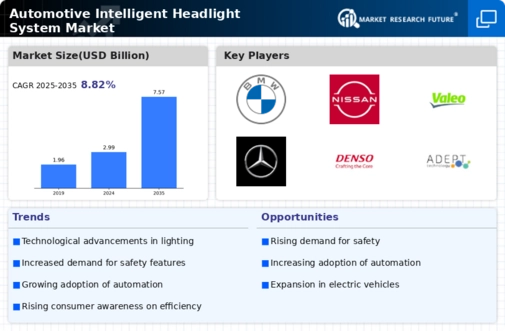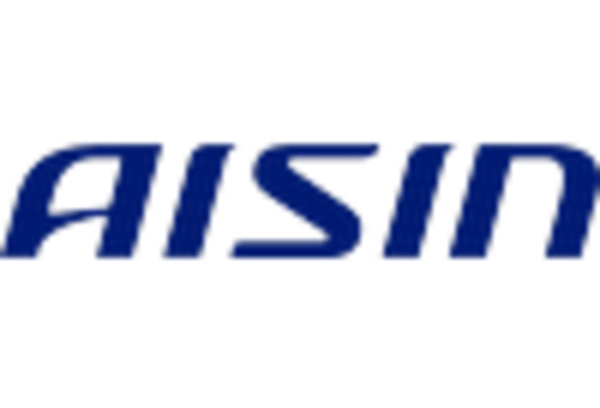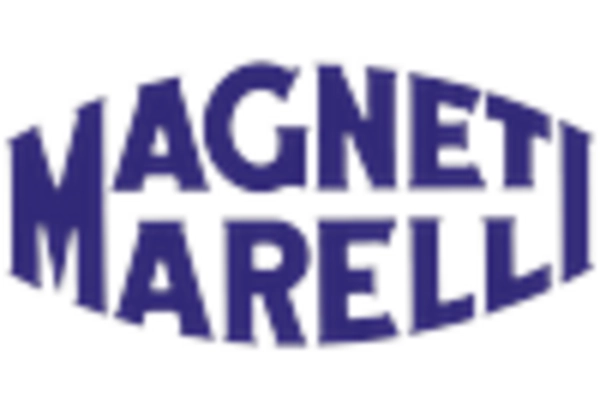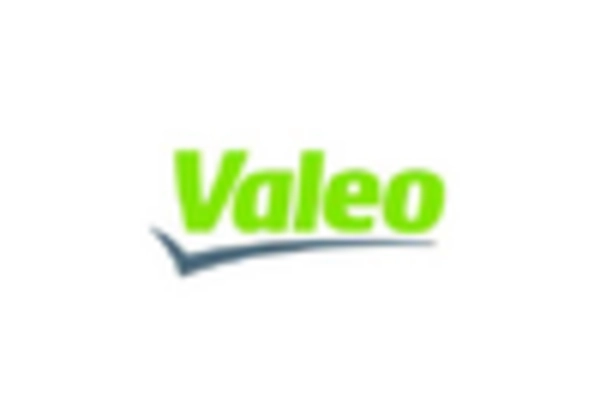Regulatory Standards
Regulatory standards play a pivotal role in shaping the Automotive Intelligent Headlight System Market. Governments worldwide are implementing stringent regulations aimed at enhancing road safety and reducing accidents caused by inadequate vehicle lighting. For instance, regulations mandating the use of adaptive headlights are becoming more prevalent, as they significantly improve nighttime visibility. The market is expected to respond positively to these regulations, with an anticipated increase in the adoption of intelligent headlight systems. Data indicates that regions with strict lighting regulations are witnessing a faster uptake of advanced headlight technologies. This regulatory push not only fosters innovation but also compels manufacturers to invest in research and development, ensuring compliance while meeting consumer expectations for safety and performance.
Technological Innovations
The Automotive Intelligent Headlight System Market is experiencing a surge in technological innovations, particularly with the integration of adaptive lighting systems. These systems utilize sensors and cameras to adjust the headlight beam according to road conditions, enhancing visibility and safety. As per recent data, the market for adaptive headlights is projected to grow at a compound annual growth rate of approximately 10% over the next five years. This growth is driven by advancements in LED and laser technologies, which offer improved energy efficiency and longer lifespans. Furthermore, the incorporation of artificial intelligence in headlight systems is likely to optimize performance, making vehicles smarter and more responsive to their environments. Such innovations not only improve driving safety but also align with the increasing consumer demand for high-tech automotive features.
Electric Vehicle Integration
The integration of intelligent headlight systems in electric vehicles (EVs) is emerging as a significant driver in the Automotive Intelligent Headlight System Market. As the adoption of EVs continues to rise, manufacturers are increasingly focusing on incorporating advanced lighting technologies that complement the unique design and functionality of electric vehicles. Intelligent headlight systems not only enhance the aesthetic appeal of EVs but also contribute to energy efficiency, a critical factor for electric vehicle owners. Data indicates that the EV market is projected to grow at a rate of over 20% annually, which will likely lead to a corresponding increase in the demand for intelligent headlight systems. This synergy between EVs and intelligent lighting technologies presents a lucrative opportunity for manufacturers to innovate and capture a larger market share.
Consumer Demand for Safety Features
The Automotive Intelligent Headlight System Market is significantly influenced by the rising consumer demand for enhanced safety features in vehicles. As consumers become more aware of the importance of visibility during night driving, the preference for intelligent headlight systems that offer adaptive and dynamic lighting solutions is increasing. Market Research Future suggests that nearly 60% of consumers prioritize safety features when purchasing a vehicle, which includes advanced headlight technologies. This trend is further supported by the growing number of accidents attributed to poor visibility, prompting manufacturers to innovate and integrate intelligent lighting systems into their offerings. Consequently, the demand for these systems is expected to rise, driving market growth and encouraging manufacturers to enhance their product lines to meet consumer expectations.
Rising Awareness of Nighttime Driving Hazards
The Automotive Intelligent Headlight System Market is witnessing growth due to the rising awareness of nighttime driving hazards among consumers. As statistics reveal that a significant percentage of traffic accidents occur during night hours, there is an increasing emphasis on the importance of effective vehicle lighting. This awareness is driving consumers to seek vehicles equipped with advanced headlight systems that enhance visibility and reduce the risk of accidents. Market data suggests that the demand for intelligent headlight systems is likely to increase as consumers prioritize safety features that address nighttime driving challenges. Manufacturers are responding to this trend by developing innovative lighting solutions that not only improve visibility but also adapt to varying driving conditions, thereby enhancing overall road safety.


















Leave a Comment